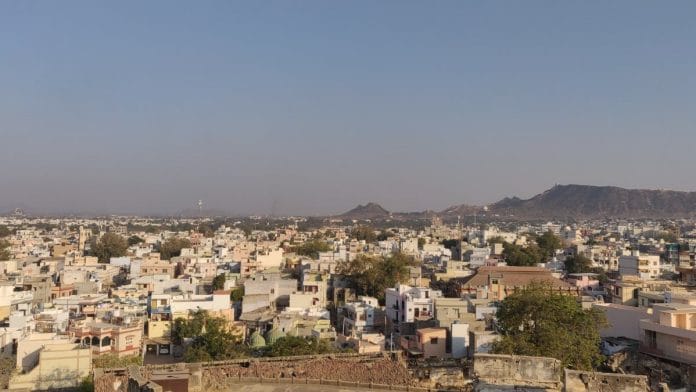New Delhi: The Ministry of Housing and Urban Affairs (MoHUA) has undertaken a new initiative with the aim to help the country’s urban local bodies (ULBs) get a clear picture of their current status in various aspects of their functioning, and improve their performance and service delivery. For this, the ministry is consolidating critical information on over 4,700 ULBs onto one single portal.
The portal, likely to be named “Aaina” (mirror), will have information from across domains — planning, finance, etc — said senior ministry officials, adding that the exercise will also allow ULBs to learn from the work done by other civic agencies.
“Currently, information about all the ULBs in the country isn’t available on one platform. The idea is to provide a platform for ULBs to learn from each other and also have critical data, which can be used in the future for planning new schemes and taking policy decisions,” a senior ministry official, aware of the development, told ThePrint.
There are 4,041 statutory towns — which have a municipality, corporation, cantonment board or notified town area committee — in the country, according to the 2011 Census. Senior officials said that the number has increased to around 4,700 in the past few years.
Under the new initiative, the ULBs will be asked to provide data under five broad categories: planning, municipal finance, citizen-centric services, administrative structure and delivery of basic services.
Under each category, the ministry has identified around 60 indicators that will capture key aspects of the ULBs’ functioning.
Speaking to ThePrint about the initiative, Milind Mhaske, chief executive officer of Praja Foundation, a Mumbai-based non-profit working in the field of urban governance, said the proposal to collate all relevant data regarding municipal governance is a good idea as it will give a clear picture of where ULBs stand today.
“The most important information is about the structure of municipal corporations apart from financial health. Most cities don’t have the capacity to maintain services,” he said.
ThePrint reached MoHUA via WhatsApp messages for comment but had not received a response by the time of publication. This report will be updated if and when a response is received.
Also Read: Improve infra, make cities more ‘liveable’ — Modi govt plans new programme for urban local bodies
Need for a comprehensive data platform
In the past decade, the central government has invested in the development of cities through various missions and schemes.
At an event last month, Union Housing and Urban Affairs minister Hardeep Singh Puri said, “More than Rs 18 lakh crore have been invested since 2014 in the transformation of our cities and towns.”
While the ministry has data about the cities covered under various missions and schemes such as Smart Cities Mission, Atal Mission for Rejuvenation and Urban Transformation (AMRUT), among others, the information available is specific to the scheme, said another senior ministry official.
The new initiative, officials said, will help standardise data collection, which is needed since all ULBs have a different way of collating data or different parameters.
“We are in the process of finalising the indicators. The dashboard will be initially open to the ULBs to upload the data. This is a big exercise as data of 4,700 plus ULBs will be available on one platform,” said the official.
“Once ready, this will help us in planning schemes for cities in the future. But this will also act as a knowledge-sharing platform for cities where ULBs, especially in tier-2 and 3 cities, can learn from other ULBs and improve their functioning,” the official added.
One of the major challenges faced by most ULBs, urban development experts said, is shortage of staff, especially in sanitation and other services.
Giving examples of the indicators, the official said that under municipal finance, information on annual audit of accounts, frequency of audits, revenue receipt and grants from states and the Centre, among others, will be required.
Similarly, under delivery of services, ULBs will be expected to provide information on door-to-door waste collection facilities, sewer networks, solid waste processing units and road infrastructure, among others.
In many cities, measures have been taken to improve citizen-centric services. The dashboard will play an important role in providing data about the types and number of services, especially online.
Services, such as building plan sanctioning and the issuance of different licences, among others, have been made online in several city bodies, said senior ministry officials.
Also Read: Centre considers ways to use SVAMITVA data to help villages realise their solar power potential
Devolution of powers and responsibilities
In June 1993, the Constitution (74th Amendment) Act of 1992 came into force under which 18 critical functions were listed that state governments were supposed to transfer to urban local bodies.
Prominent among them were issues related to urban planning, water supply, fire, and land use regulations, slum improvement etc.
In the past three decades, municipal governance experts said, very few functions mentioned in the 12th schedule of the Constitution have been given to urban local bodies.
For instance, water supply, slum rehabilitation and fire service, among others, continue to be under the state governments. In some states, there are parastatal bodies that manage water supply, they added.
According to the Urban Governance Index 2020, published by the Praja Foundation, none of the state governments has transferred all 18 functions to urban local bodies.
“The plan is to have parameters to see how many and which all functions under the 74th Amendment have been devolved by states,” said the second official.
(Edited by Richa Mishra)






